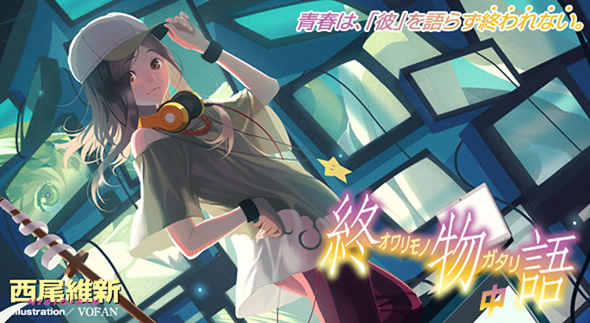Hey, Kyra here! This is Kotoba #3, a weekly glance over interesting expressions and words found in Anime and other medias.
As mentioned in Kotoba #1, whereas [Onamae wa] series focus on characters’ names, [Kotoba], as the the word 言葉 (koto.ba; word) implies, aims to deliver lightweight trivia and/or further explanation about unusual vocabulary that very often happens to appear in Anime.
![[HorribleSubs] Zombieland Saga - 02 [1080p].mkv_snapshot_14.06_[2018.10.13_10.12.19]_LI](https://kyradesuyo.wordpress.com/wp-content/uploads/2018/10/horriblesubs-zombieland-saga-02-1080p-mkv_snapshot_14-06_2018-10-13_10-12-19_li.jpg?w=616)
触れ合い (fu.re.a.i)
Source: Zombieland Saga – Episode 2
The word 触れ合い (fu.re.a.i) is formed by 触れる (fu.reru; to touch, to experience) and 合う(a.u; to come together, to meet, to unite). A common translation is mutual touch or mutual contact and it is used to describe any event or situation that promotes social interaction and foster bonding. It became popular in the 70s and 80s as a movement fighting against the increasing individualism and loss of the sense of community that used to be the core of Japanese society (or most societies, for that matter). As seen in this Episode, the target audience for this is mainly elderly people, although you could also see some kids and middle-aged adults here and there.
![[HorribleSubs] Goblin Slayer - 01 [1080p].mkv_snapshot_01.56_[2018.10.07_11.12.35]](https://kyradesuyo.wordpress.com/wp-content/uploads/2018/10/horriblesubs-goblin-slayer-01-1080p-mkv_snapshot_01-56_2018-10-07_11-12-35.jpg?w=616)
駆け出し (ka.ke.da.shi; beginner)
Source: Goblin Slayer – Episode 1
The verb 駆け出す (ka.ke.da.su; to start running) gave origin to 駆け出し (ka.ke.da.shi; the action of starting to run or the person performing the action). Then we had the obvious correlation between those who are starting to run and someone who is still learning the ropes in a job or given area.
![[HorribleSubs] Seishun Buta Yarou wa Bunny Girl Senpai no Yume wo Minai - 02 [1080p].mkv_snapshot_11.44_[2018.10.13_11.43.42]](https://kyradesuyo.wordpress.com/wp-content/uploads/2018/10/horriblesubs-seishun-buta-yarou-wa-bunny-girl-senpai-no-yume-wo-minai-02-1080p-mkv_snapshot_11-44_2018-10-13_11-43-42.jpg?w=616)
赤裸々 (seki.ra.ra; nude, frank, outspoken)
Source: Seishun Buta Yarou wa Bunny Girl Senpai no Yume wo Minai – Episode 2
I love this word! It is formed by 赤 (aka; red) and 裸 (hadaka; nude, openness). 赤 can also convey the idea of completeness or perfection, although the only word that comes to mind that fits this is 赤の他人 (aka.no.ta.nin; complete stranger). Similarly to its synonyms 素っ裸 (sup.padaka) and 真っ裸 (map.padaka), 赤裸々 (seki.ra.ra) has a concrete meaning of describing stark nudity. In the abstract sense, it refers to being frank and outspoken. In this link there is small text on the difference between 赤裸々 (seki.ra.ra; frank, outspoken. Literally: stark nude) and 露骨 (ro.kotsu; open, plain, frank. Literally: bones exposed). In 赤裸々 there is an inherent idea that whatever is being exposed is supposed to be a cause of shame, while in 露骨 it feels like the subject is actually willing to aggressively expose something. In the words of the author, 赤裸々 could be considered a masochist way of exposing yourself, while 露骨 would be a sadistic way of being frank. Given the context of the conversation between Mai and Sakuta, her choice was on point!

出歯亀 (de.ba.kame; voyeur)
Source: Owarimonogatari – Volume 2, Chapter 25
I could possibly write one [Kotoba] per day when it comes to Monogatari series. There are so many incredible words featured in the works of Nisio Isin that I could rename this series to [Monogatari no Kotoba] and still wouldn’t be able to cover everything here. As I have recently finished the 16th book of the series, 終物語 中 (Owarimonogatari Volume 2), I thought it would be interesting to share one of them.
![[Coalgirls]_Owarimonogatari_12_(1920x1080_Blu-ray_FLAC)_[8A1C429A].mkv_snapshot_08.31_[2018.10.13_14.02.21]](https://kyradesuyo.wordpress.com/wp-content/uploads/2018/10/coalgirls_owarimonogatari_12_1920x1080_blu-ray_flac_8a1c429a-mkv_snapshot_08-31_2018-10-13_14-02-21.jpg?w=616)
![[Coalgirls]_Owarimonogatari_12_(1920x1080_Blu-ray_FLAC)_[8A1C429A].mkv_snapshot_08.22_[2018.10.13_14.01.48]](https://kyradesuyo.wordpress.com/wp-content/uploads/2018/10/coalgirls_owarimonogatari_12_1920x1080_blu-ray_flac_8a1c429a-mkv_snapshot_08-22_2018-10-13_14-01-48.jpg?w=616)
The screenshots above are from its Anime adaptation but the word itself doesn’t appear on it. To put into context, Araragi and Ononoki were from far away staring at Shinobu mounted on Kanbaru, apparently having a heated discussion. Instead of intruding and preventing things from escalating, Ononoki proposes to continue hidden and act like a 出歯亀 (de.ba.kame). Hmm. Weird word. Let’s check it out!
出歯亀 is formed by 出歯 (de.ba; protruding tooth), a physical trait, plus 亀 (kame; turtle). Uh… alright. So how does a turtle with a protruding tooth became a symbol of voyeurism? The story goes back to 1908, in current Shinjuku, Tokyo. There was murder and rape crime committed by a man named 池田 (ike.da) 亀太郎 (kame.ta.rou), who had as distinguished physical trait a protruding tooth which gave him the alias of 出歯亀 (de.ba.kame). The point is that he used to peep into women’s bath and eventually this culminated in murder and rape. The incident became widely known and the name 出歯亀 was stuck in the front page of newspapers for days, leading to its popularization. Eventually 出歯亀 became associated with all sort of lewd actions, including peeping, assaulting women or otherwise behave perversely (Source, JPN only).
Back to the scene in Owarimonogatari, at that point it was uncertain what was going on between Kanbaru and Shinobu. By using the word 出歯亀, Ononoki further fed the already ongoing thoughts in Araragi’s head that those two were doing something lewd (which wasn’t the case, of course). Sadly this wasn’t made evident in the Anime version, as a lot of what is going on through Araragi’s head ends up omitted in its adaptation.
Thanks all for your time, hope you enjoyed your reading. This season has some really good gems. My favorite ones so far are Irozuku Sekai no Ashita kara and Zombieland Saga. Seriously, give Zombieland Saga a try, Episode 2 was hilarious. Tomorrow we will continue our exploration of names from Fall 2018. See you all then!
